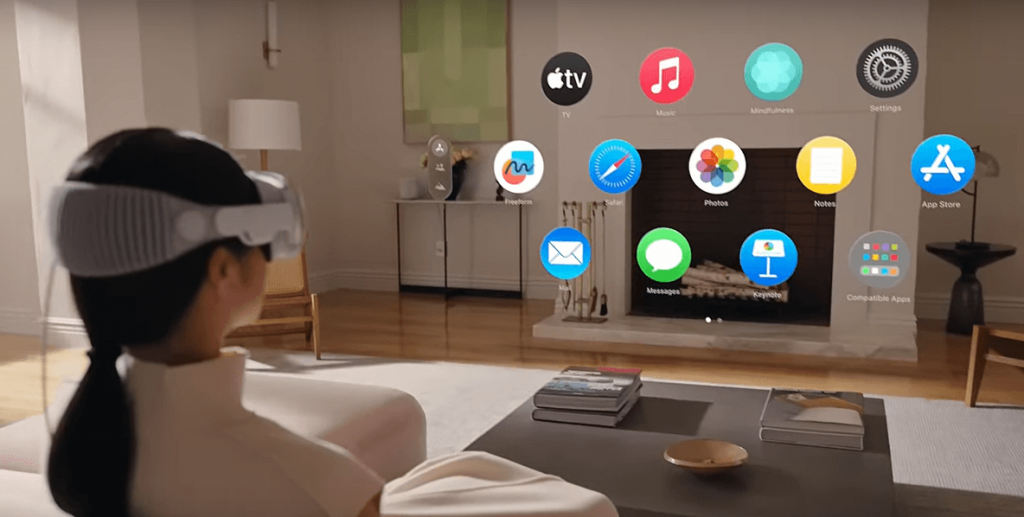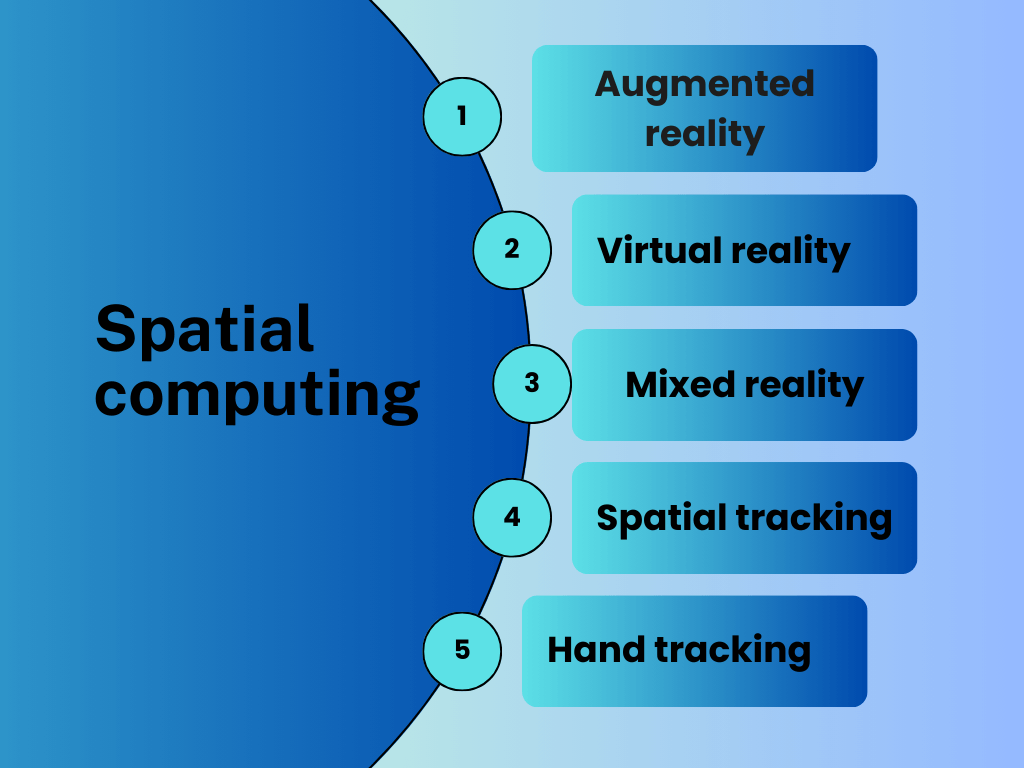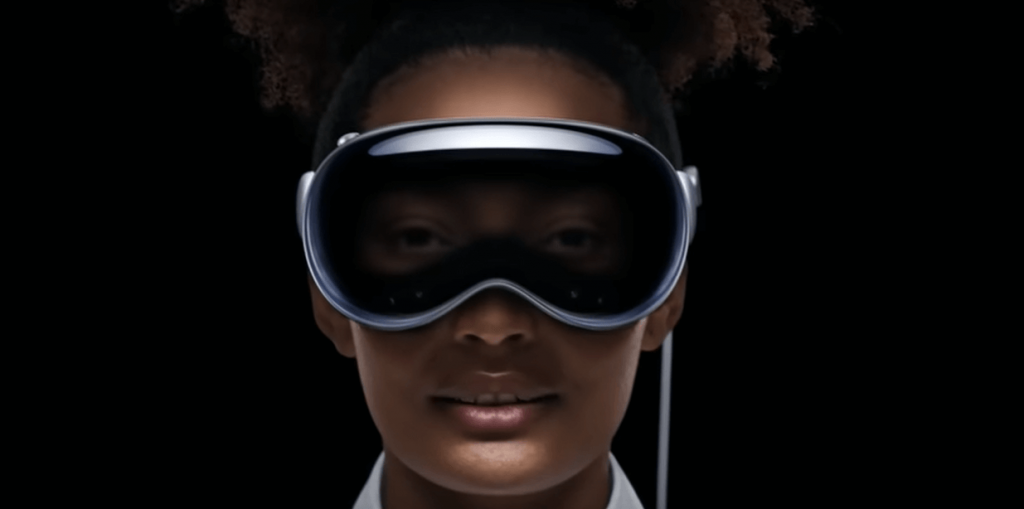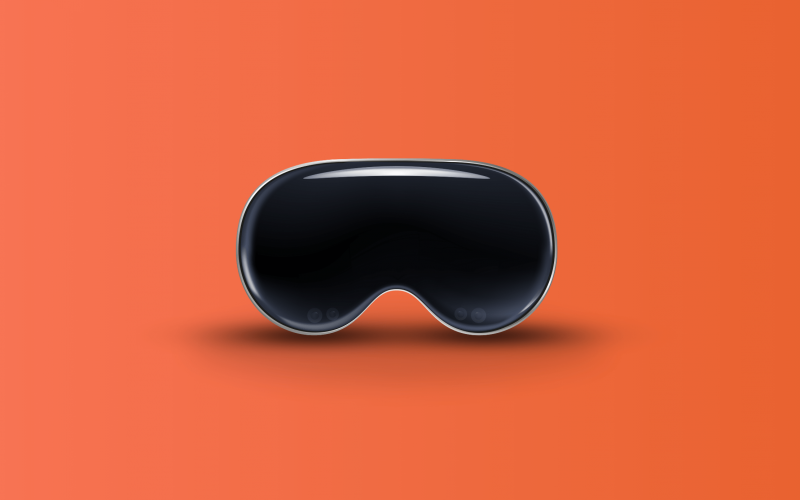In our fast-paced world that is becoming more and more digital, every piece of news about some top-notch device launch might initially give you a creepy “black mirror” feeling and a thought “What’s next?” But after pulling yourself together and saying the “that-was-just-a-movie” mantra a couple of times, you might want to consider the potential benefits these technological advancements hold in store.
VR (virtual reality) and AR (augmented reality) headsets have been with us for quite some time so we don’t tend to take them as something threatening and unknown. Last decade has seen a variety of headsets providing realistic experiences in comparison to earlier models, but the quest for perfection is still in progress and many famous tech companies are venturing out into this market. Having chosen the “last but best” strategy, Apple is no exception here.
In this article, we’re going to get some idea of what spatial computing is and how it can possibly affect retail and ecommerce and take a closer look at Apple Vision Pro, its capacities and implementation.
Contents:
2. How are spatial computing technologies used in retail business and ecommerce?
4. How can Apple Vision Pro be used?

What is spatial computing?
Spatial computing is essentially the use of digital technology which helps make computers interact in a three-dimensional world. It’s a way of computing that takes into account the physical environment and the user’s location and orientation. This means that interaction with computers is no longer limited to keyboard input and screen-speakers output. Spatial computing uses physical space for sending input and receiving output from a computer, which makes the users experience immersion in the digital realm and interact with objects existing there.
At the same time, spatial computing serves as an umbrella term for all kinds of tech that make natural interaction with computers possible. When talking about spatial computing, we most often mean the following types of technologies:
- Augmented reality
- Virtual reality
- Mixed realty
- Spatial tracking
- Hand tracking

How are spatial computing technologies used in retail business and ecommerce?
Spatial computing can be seen as a rapidly growing set of technologies with a variety of potential applications in a number of spheres like gaming, education, healthcare, real estate, retail industry, ecommerce and others. Spatial computing tech is the innovation that basically fostered the appearance of immersive commerce as an extension of ecommerce and a means of providing interactive shopping experience and personalized approach. Metaverse, a network of 3D virtual worlds and the term we hear more and more often these days, also stems from spatial computing technologies, we’re going to look at briefly.
Augmented reality (AR)
AR overlays digital information or a computer-generated image on the real world, providing a composite view. AR gives the user a mix of the real and digital worlds in one. What started as a game of chasing pokemons, now gave rise to a bunch of immersive commerce business solutions like virtual fitting rooms, product visualization apps, guides and instructions for various products, brand awareness and marketing campaigns using AR.
Virtual reality (VR)
VR creates a completely immersive experience by blocking out the real world and displaying a simulated one. VR is also one of immersive commerce solutions, successfully used for ecommerce, retail and many other spheres, including healthcare, navigation, gaming, entertainment, education and others. VR can help create a virtual store for retail or ecommerce, which allows customers to walk around and interact with products in a way close to natural. It proved to be especially helpful when selling products that are hard to see or understand in the real world, such as furniture or cars. VR tech enables such immersive commerce solutions like virtual product showrooms, virtual customer service, virtual tutorials and trainings.
Mixed reality (MR)
MR is a combination of AR and VR, allowing users to interact with both digital and physical objects. Mixed reality commerce merges the traditional brick-and-mortar store with online shopping, allowing customers to “try and feel” the product before buying with the ease and convenience of online stores.
Spatial tracking
Spatial tracking is the technology that helps make AR, VR and MR possible by means of determining the location and orientation of a device in space, which is done with the help of sensors such as cameras, accelerometers, and gyroscopes.
Hand tracking
Hand tracking is also a supportive tech, the ability to track the position and movement of a user’s hands in space, performed with the help of cameras or depth sensors.
Some companies have already embraced spatial computing to meet their needs today:
- IKEA Place is an AR app that allows users to see how IKEA furniture would look in their homes and choose with more confidence.
- BMW, Audi, Porsche, Jaguar Land Rover are just some of the brands using VR showrooms to allow customers to see a different color or a latest model of their cars.
- Nike uses AR tech that allows their customers to virtually try different shoes and see how they would look.
- Maybelline and L’Oréal are some of the personal care brands using AR to help customers try on makeup virtually, which can really help their customers choose shades and colors.
According to the worldwide study conducted in 2022, less than 10 percent of companies in the consumer goods and retail industries were embracing immersive technologies in their business processes with one quarter using AR for product visualization. What it gives us is that spatial computing is only being discovered as an effective business tool for retail and ecommerce companies and has a huge potential as more players are going to follow in the footsteps of early adopters.
This rather slow pace of new tech adoption can be attributed to the fact that adoption of spatial computing requires the use of advanced tech like VR headsets and AR glasses, which is still expensive for businesses and consumers. Spatial computing relies heavily on the quality of VR/AR headsets and software for them, so many companies are working on their spatial computing solutions to cover the demand of the market.

What is Apple Vision Pro?
At the 2023 Apple Worldwide Developers Conference in June, Apple unveiled the device that has been rumored about for quite some time – Apple Vision Pro. Positioned as Apple’s first spatial operating system, however ambitious that may sound, Apple Vision Pro is a mixed reality headset which can easily shift to full virtual reality with the help of a dial. The sales launch is planned early next year (2024) in the US, and the headset will appear in Apple stores at an overwhelming price of $3,499, which is no surprise for Apple fans.
Apple is by far not the first in the headset market but seems like the most expensive. Meta has announced its Quest 3 headset coming this fall at about $500, so it’s difficult to even say if it should be considered competition, but it has to be said that Apple is already working on a cheaper version of Apple Vision Pro, which can compete with Meta’s Quest 3 on price.
Let’s try answering what is so special about this device that makes you buy it beating the competitors much cheaper ones?
First, Apple Vision Pro is a high-end device that’s designed to be used for a number of purposes like gaming, entertainment, productivity, and creativity. It’s packed with the best technology: two 4K OLED displays with a combined resolution of 23 million pixels, a powerful Apple M2 chip, and a suite of sensors that allow it to track the user’s head, eyes, and hands in 3D space. All that supports different input methods, including eye tracking, hand tracking, and voice control, which means that you can navigate with your eyes, tap to select, flick to scroll, and use your voice to dictate. The details aren’t yet fully disclosed by Apple, but Vision Pro is expected to come with a set of pre-installed apps and is powered by a detachable battery pack that attaches with a cord and a magnet to the actual headset. It can run up to two hours on a single charge. The apps that you see in Apple Vision pro have dimension, react to light, and cast shadows, which seems magical.
Second, Apple Vision Pro is the best-looking headset in its category if we rely on the words of Alex Heath, Deputy Director at the Verge, who’s seen it firsthand. And you tend to agree with that opinion if you look at the presentation video. Indeed, a pair of fancy sci-fi ski goggles, as it was claimed by many. Making beautiful technology is a characteristic feature of Apple, whether you take a MacBook, iPhone, Apple Watch or Apple Vision Pro now. The most surprising and distinct feature is the front-facing display that shows your eyes as you’re wearing the headset, which means that you can use other devices and people around you can see where you’re looking in real space. And that’s something other headsets can’t boast.
Third, Apple Vision Pro is an incredibly personalized device, as it has 12 cameras that can scan your face and your eyes to recognize that it’s you. When you put it on for the first time, it scans your face so that it can then show an accurate 3D representation of you in FaceTime calls. For people with glasses, Apple has developed this proprietary prescription lens system that clips on the inside of the headset, as you can’t wear it with glasses, so tight it sits on your face.
Many positive reviews, the latest tech and fancy materials make Apple Vision Pro stand out from its category, which can be the reason for early adopters’ crowd to splurge on it.
How can Apple Vision Pro be used?
As Apple Vision Pro can seamlessly blend augmented reality, which is showing the world around you, with virtual objects and full virtual reality, there are a number of potential uses for this device as Apple sees it now.
Photo and video
Apple’s first-ever 3D camera allows you to capture photos and videos with outstanding depth and relive a memory as if you’re right back in the exact moment or make a gallery out of your living-room.
Movies
Apple Vision Pro can make a movie theater out of whatever space you’re in, automatically darkening and casting a beautiful glow into the room. It allows you to make the screen of any size and set a stunning environment around you. Spatial audio surrounds you and produces the effect of immersion with you controlling the degree of it.
Gaming
The Vision Pro’s high-resolution displays and powerful chip make it ideal for gaming, including immersive VR games or AR games.
Work space and creativity
Apple Vision Pro can help you create the perfect workspace anywhere. You can browse the web easily, being able to see all the open tabs, read texts, watch videos with perfect clarity, use all your favorite apps and other devices, and work on documents and presentations. All that is arranged and controlled by you. FaceTime meetings are smooth, which provides a better collaboration and natural conversation. It can also help with lots of creative tasks like animation, video editing and what not.
Relaxation
Reading a favorite book or listening to music, meditating like with the Mindfulness app can be experienced in 3D created by Apple Vision Pro.
These are just some basic ideas of how Apple Vision Pro can be used with more coming when the device starts selling.
Bottom line
There’s no other way of surviving in today’s fast-paced digital landscape but embracing the potential of spatial computing, which is most likely going to transform the way we communicate, do business and interact with computers. Adapting to the change and using it to our advantage will help stay relevant and thrive. And that’s only possible through transformation, digitalization and optimization of all the business processes.







.png)

Great Article! Thank you for sharing this is very informative post, and looking forward to the latest one.
Thank you, Jasper! We’re glad you enjoyed our article.